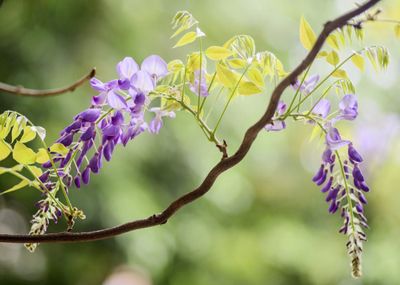Growing a Vertical Garden in Zone 8
With the hot summers of zone 8, training plants up walls or over pergolas not only creates a shady oasis but can also help reduce cooling costs. Not every yard has room for a large shade tree, but vines can take up much less space. Using zone 8 climbing vines is also a nice way to create privacy in rural areas where you may sometimes feel like your neighbors are a little too close for comfort. While it’s nice to be neighborly, sometimes you may just want to enjoy the peace, quiet, and solitude of reading a book on your patio without the distractions going on in your neighbor’s yard. Creating a privacy wall with climbing vines is a beautiful and polite way to create this privacy while buffering out noises from next door. Growing a vertical garden in zone 8 can also help you maximize limited space. Fruit trees and vines can be grown vertically on fences, trellises, and obelisks or as espaliers, leaving you with more space to grow low-growing vegetables and herbs. In areas where rabbits are particularly problematic, growing fruiting plants vertically can help ensure that you get some of the harvest and are not just feeding the rabbits.
Vines in Zone 8 Gardens
When choosing plants for zone 8 vertical gardens, it’s important to start by considering how the vines will grow up. Generally, vines climb up either by tendrils that twist and twine around things, or they grow up by attaching aerial roots to surfaces. Twining vines grow better on a trellis, chain link fences, bamboo poles, or other things that allow their tendrils to twist around and take hold. Vines with aerial roots grow better on solid surfaces like bricks, concrete, or wood. Below are some hardy zone 8 climbing vines. Of course, for a vertical vegetable garden, any vining fruits or vegetables, such as tomatoes, cucumbers, and pumpkins can also be grown as annual vines.
American bittersweet (Celatrus orbiculatus) Clematis (Clematis sp.) Climbing hydrangea (Hydrangea petiolaris) Coral vine (Antigonon leptopus) Dutchman’s pipe (Aristolochia durior) English ivy (Hedera helix) Five-leaf Akebia (Akebia quinata) Hardy kiwi (Actinidia arguta) Honeysuckle vine (Lonicera sp.) Wisteria (Wisteria sp.) Passionflower vine (Passiflora incarnata) Trumpet vine (Campsis radicans) Virginia creeper (Parthenocissus quinquefolia)
